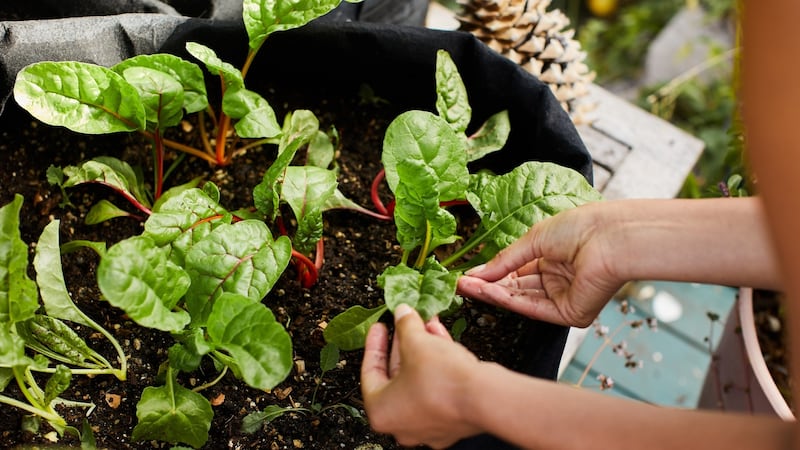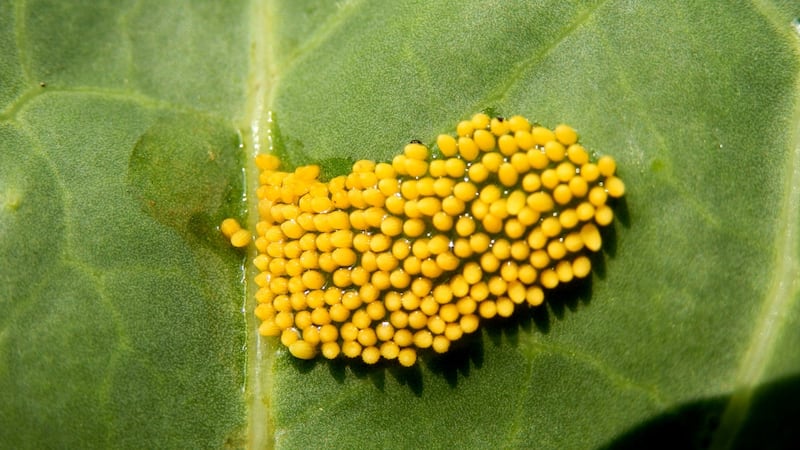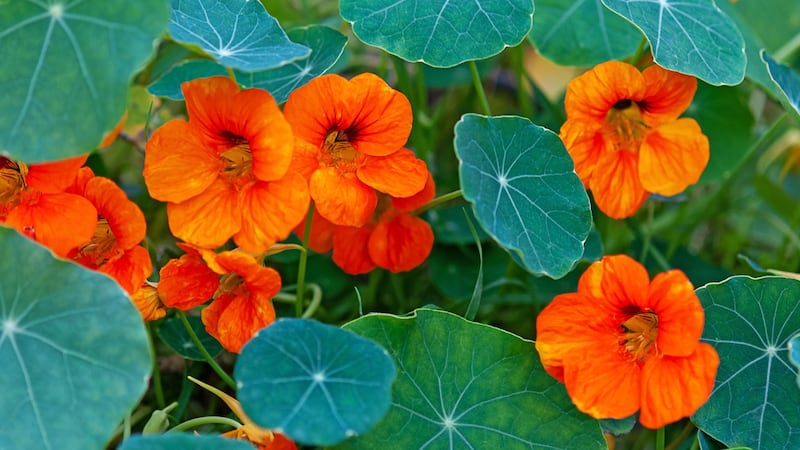Wondering what to do in the kitchen garden or allotment this week? Here’s some inspiration...
Sow spinach
While the main sowing season has now passed, mid-June is still a good time to sow seed of fast-growing vegetable and leafy crops such as lettuce, rocket, oriental leaves, annual spinach, radish, chicory, peas, Swiss chard, Florence fennel, kohlrabi, salad onions, beetroot, turnips, swedes and carrots. You can also sow seed of many kinds of herbs including coriander, basil, chervil, parsley, dill, fennel and oregano. Remember that sowing into modules/seed trays for planting out later into the garden/allotment as young transplants is an excellent way to help protect baby seedlings against slug and snail damage and make them less vulnerable to being overwhelmed by weeds. Just make sure to keep freshly-sown trays above the ground (ideally on an outdoor table or bench), keep a watchful eye out for slugs (check the undersides of the trays/pots during the day) and water them each morning to prevent their baby root systems from becoming stressed or drying out.

Attend to tomatoes
At this time of year it’s important to keep tomato plants well watered and start giving them a liquid feed every 10-14 days. To prevent their sappy stems from breaking under the weight of the developing fruits, cordon/indeterminate varieties (varieties that are typically tall and inclined to sprawl as opposed to the compact/ tumbling bush types) also need to be carefully trained vertically using a bamboo or a length of strong string tied to the roof supports of the glasshouse or polytunnel. To prevent them from turning into an unproductive tangle of foliage, make sure to also keep these plants regularly side-shooted. Side shooting is a very simple process of nipping out any baby secondary shoots as they emerge along the main stem between the leaf axils or at the base of the plant. With indeterminate/cordon types it’s also best to nip out the growing tip of the plant once six to eight fruit trusses have set (fruit trusses take the place of the pollinated flowers after they fade) to encourage it to put all its energy into ripening fruit rather than growing more stems. Removing the lowest leaves (those below the first truss of fruit) is also important to help air circulation and reduce the risk of disease.

Watch for cabbage whites
It's known as the cabbage white butterfly but in fact many members of the large brassica family including kale, Brussels sprouts, broccoli, turnips, swedes, radish, mustard, pak choi, kohlrabi and cauliflower are vulnerable to being damaged by the larvae of this pretty white butterfly, which lays its eggs on the undersides of the leaves throughout the summer months. Once they hatch, the caterpillars can very quickly strip a plant of its foliage, reducing a healthy crop to a tattered mess of leaves while covering it with their excrement (I'm not sure which is worse). While infested plants can be successfully treated using a nematode spray (Nemasys Natural Fruit & Veg Protection, available from mrmiddleton.com), it's cheaper and better to prevent infestations in the first place by growing brassicas under a layer of protective netting such as Bionet (fruithillfarm.com) or fine horticultural fleece supported on hoops. These kinds of crop covers will also protect plants against other common brassica pests including pigeons and cabbage fly. Before putting crop covers in place, always check the underside of leaves for cabbage white butterfly eggs and rub away any that you find. Depending on the species, these could be bright yellow and laid in clusters (the large cabbage white) or pale yellow and laid singly (the small cabbage white).

Go vertical
Stuck for growing space? Then go vertical with runner beans or climbing French beans, both of which will grow happily in a large tub or pot. There’s still enough time to sow seed; recommended varieties include “Cobra” and “Helda” (climbing French beans) and “Enorma” and “Crusader” (runner beans). Alternatively, young plants are often available to buy from garden centres at this time of year and can be planted directly out into their final growing position in the garden or allotment.
Both runner beans and French beans like full sun and a rich, fertile, weed-free, moisture-retentive but free-draining soil that never totally dries out. If you’re growing them in a container, then add some well-rotted manure or garden compost plus a handful or two of slow-release organic fertiliser to the mix, making sure to integrate it well before sowing/planting at a spacing of 20cm.
You’ll also need to provide some form of sturdy support for these climbing plants, which can quickly reach a height of up to 2 metres. If you’re growing them in a pot, give the plants a wigwam made of bamboo canes. Both runner beans and French beans also appreciate a liquid seaweed/comfrey feed, which really helps to boost productivity.

Introduce edible flowers
From exotically beautiful dahlias to golden pot marigolds, jaunty snapdragons and fiery nasturtiums, every garden or allotment should have some edible flowers to use as pretty garnishes or to add pops of jewel-like colour to salads, summer beverages and puddings. It’s too late to sow seed or plant tubers of the species named above but all can be found as young, pot-grown plants for sale in good garden centres at this time of year. Transplanted into a sunny, fertile spot and kept well watered until they’ve established sturdy root systems, they’ll produce their decorative, edible blooms throughout the summer. To prolong the flowering season for as long as possible, regularly deadhead any faded blooms and give the plants an occasional liquid feed.

Sow sprouting broccoli
Purple sprouting broccoli is one of those truly delicious vegetables that’s very expensive to buy and rarely seen for sale, yet is surprisingly easy to grow as long as you can give the large plants the space they need. Now is the perfect time to sow seed, which is best sown into small pots/modules under cover of a polytunnel, glasshouse or bright porch, or on a sunny window sill indoors for transplanting outdoors next month. Avoid sowing generously (bear in mind that each plant needs a growing space of 75cm x 75cm, which it will be occupying until next spring), and thin out/prick out any unwanted seedlings. You should see germination within the week, with the young seedlings ready for transplanting outdoors into their final position a month after sowing.
To extend the harvesting season of this hardy vegetable, consider sowing a mix of early- and late-cropping varieties such “Purple Spouting Early” (harvest March-April) and “Claret” (harvest April-May).

This Week in the Garden
A hardy annual that’s a key species in many traditional wildflower meadows because of its ability to steal nutrients from overly vigorous perennial grasses and thus make room for less thuggish species, yellow rattle is in full flower at the moment, making it easier to identify as regards harvesting its ripe seed later in the summer. As is true of all wildflowers, always harvest the seed responsibly by taking only small amounts and getting the permission of the landowner in advance.
If you’ve recently planted container-grown trees, shrubs, roses, perennials or bedding plants in your garden, then it’s important to keep them regularly watered for the rest of the summer as their root systems aren’t yet fully established, making it difficult for them to cope with hot, dry weather. Because of their size and large leaf canopy, large woody species in particular can really struggle during any prolonged dry spells; obvious signs include wilting, dropping leaves or yellowing/discolouration of the foliage.
For best results, always water in the early morning/evening and at the base of the plant right next to the main stem/trunk, gently directing the water so that it doesn’t dislodge soil or expose the root ball. If you suspect that a plant is very badly in need of watering, it’s a good idea to water it several times over the course of a day so that the water has a chance to properly sink down deep into the ground.












